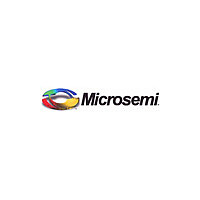A3P125-QNG132 MICROSEMI, A3P125-QNG132 Datasheet - Page 7

A3P125-QNG132
Manufacturer Part Number
A3P125-QNG132
Description
Manufacturer
MICROSEMI
Datasheet
1.A3P125-QNG132.pdf
(144 pages)
Specifications of A3P125-QNG132
Lead Free Status / Rohs Status
Compliant
Available stocks
Company
Part Number
Manufacturer
Quantity
Price
Company:
Part Number:
A3P125-QNG132
Manufacturer:
ACT
Quantity:
343
Company:
Part Number:
A3P125-QNG132I
Manufacturer:
ACT
Quantity:
265
Part Number:
A3P125-QNG132I
Manufacturer:
MICROSEMI/美高森美
Quantity:
20 000
1 – Automotive ProASIC3 Device Family Overview
General Description
Automotive ProASIC3 nonvolatile flash technology gives automotive system designers the advantage of
a secure, low-power, single-chip solution that is live at power-up (LAPU). Automotive ProASIC3 is
reprogrammable and offers time-to-market benefits at an ASIC-level unit cost. These features enable
designers to create high-density systems using existing ASIC or FPGA design flows and tools.
Automotive ProASIC3 devices offer 1 kbit of on-chip, reprogrammable, nonvolatile FlashROM storage as
well as clock conditioning circuitry based on an integrated phase-locked loop (PLL). Automotive
ProASIC3 devices have up to 1 million system gates, supported with up to 144 kbits of SRAM and up to
300 user I/Os.
Automotive ProASIC3 devices are the only firm-error-immune automotive grade FPGAs. Firm-error
immunity makes them ideally suited for demanding applications in powertrain, safety, and telematics-
based subsystems, where firm-error failure is not an option.
Firm errors in SRAM-based FPGAs can result in high defect levels in field-deployed systems. These
unavoidable defects must be considered separately from standard defects and failure mechanisms when
looking at overall system quality and reliability.
Flash Advantages
Reduced Cost of Ownership
Advantages to the designer extend beyond low unit cost, performance, and ease of use. Unlike SRAM-
based FPGAs, flash-based Automotive ProASIC3 devices allow all functionality to be live at power-up;
no external boot PROM is required. On-board security mechanisms prevent access to all the
programming information and enable secure remote updates of the FPGA logic. Flash-based FPGAs are
LAPU Class 0 devices, offering the lowest available power in a single-chip device and providing firm-
error immunity. The Automotive ProASIC3 family device architecture mitigates the need for ASIC
migration at high user volumes. This makes the Automotive ProASIC3 family a cost-effective ASIC
replacement solution, especially for automotive applications.
Security
The nonvolatile, flash-based Automotive ProASIC3 devices do not require a boot PROM, so there is no
vulnerable external bitstream that can be easily copied. Automotive ProASIC3 devices incorporate
FlashLock, which provides a unique combination of reprogrammability and design security without
external overhead, advantages that only an FPGA with nonvolatile flash programming can offer.
Automotive ProASIC3 devices utilize a 128-bit flash-based lock and a separate AES key to secure
programmed intellectual property and configuration data. In addition, all FlashROM data in Automotive
ProASIC3 devices can be encrypted prior to loading, using the industry-leading AES-128 (FIPS192) bit
block cipher encryption standard. The AES was adopted by the National Institute of Standards and
Technology (NIST) in 2000 and replaces the 1977 DES standard. Automotive ProASIC3 devices have a
built-in AES decryption engine and a flash-based AES key that make them the most comprehensive
programmable logic device security solution available today. Automotive ProASIC3 devices with AES-
based security allow for secure, remote field updates over public networks such as the Internet, and
ensure that valuable IP remains out of the hands of system overbuilders, system cloners, and IP thieves.
The contents of a programmed Automotive ProASIC3 device cannot be read back, although secure
design verification is possible. Additionally, security features of Automotive ProASIC3 devices provide
anti-tampering protection.
Security, built into the FPGA fabric, is an inherent component of the Automotive ProASIC3 family. The
flash cells are located beneath seven metal layers, and many device design and layout techniques have
been used to make invasive attacks extremely difficult. The Automotive ProASIC3 family, with FlashLock
and AES security, is unique in being highly resistant to both invasive and noninvasive attacks. Your
R e v i s i o n 1
1 -1














